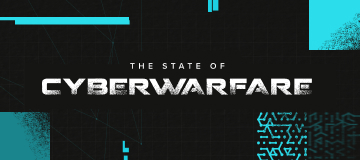Nation-state actors pose a critical level of threat to society as we know it, especially in 2024: the largest global election year in history. This year, democracy is at risk.
Today we released our second annual global cyberwarfare report, The Invisible Front Line: AI-Powered Cyber Threats Illuminate the Dark Side. Our findings paint a clear picture that organizations and governments worldwide face exponential threat levels from sophisticated nation-states and admittedly are severely underprepared to defend against impending cyberwarfare attacks.
Make no mistake – we are in a cyber arms race against our adversaries and society as we know it is at risk. Relying on legacy technologies and manual security processes is the equivalent of bringing a knife to a gunfight, given the threats we’re up against and the arsenal of nation-state actors. It’s essential that we immediately shift from a reactive to a proactive, defensive stance before it’s too late, and AI-powered solutions are available to enable and empower security teams to do just this.
The data from our threat intelligence report shows that cyberwarfare readiness has deteriorated over the past year. IT pros globally demonstrate a false sense of confidence in their organization’s cybersecurity posture and there’s been a reduced emphasis on cyberwarfare among company boards.
This, despite the average number of breaches impacting organizations rising steadily year-over-year and acknowledgment from 42% of global IT leaders that the cyberwarfare threat is imminent and that they have already reported an act of cyberwarfare to the authorities.
Here’s a closer look at the data:
IT leaders fear nation-state attacks could target the electoral process and media to wreak havoc during the biggest global election year in history.
- Half of the global population will head to the polls across 76 nations this year. Thirty-nine percent of those surveyed believe cyberwarfare could affect the integrity of an electoral process and 42% believe cyberwarfare could target the media.
- China – 44% of global respondents believe China’s state-sponsored cyber operations pose a greater threat to global security than those of Russia.
- Russia – 39% remained unsure if China poses a greater threat, acknowledging Russia’s destructive potential.
- North Korea – 44% believe its cyber capabilities have the potential to instigate a full-scale cyberwar that could cripple critical infrastructure worldwide.
The crippling impact of cyberwarfare: innovation stalled, economies disrupted
- 60% of IT leaders report that digital transformation projects have stalled or stopped entirely due to cyberwarfare risks. This marks an increase from 55% last year, highlighting the escalating threat and its stranglehold on innovation.
- Armis Labs found threat actors like the Houthi-linked OilAlpha group combining social engineering and malicious mobile apps for disguised espionage attacks across the Arabian Peninsula. While innovation may be stalling for organizations and governments, bad actors continue to push the boundaries.
AI is supercharging cyberwarfare, but global organizations aren’t even prepared for antiquated tactics.
- Armis Labs uncovered the AI-powered tactics of nation-state actors, identifying several threat actors actively using AI for advanced cyber capabilities, including:
- Russian-affiliated Forest Blizzard (APT28)
- North Korean hackers Emerald Sleet (Kimusky)
- Iranian threat actors Crimson Sandstorm (Imperial Kitten)
- Chinese state-affiliated groups, Charcoal Typhoon (Aquatic Panda) and Salmon Typhoon (Maverick Panda)
- 94% of IT decision-makers say their organization is prepared for cyberwarfare, yet only 13% of IT leaders worldwide report having a validated, proportionate plan in place to address cyberwarfare.
Forewarned is Forearmed – How AI-powered Solutions Can Help
Cyberwarfare causes significant damage, destabilizing vital processes and economies worldwide, and no organization or government is off the potential target list. Cyberwarfare attacks are easy to plan, often easy to execute, and can cause major disruption; more than many forms of conventional warfare. That’s what makes cyberwarfare such an effective form of warfare.
Armis equips organizations with Armis Centrix™, the Armis cyber exposure management platform. It is powered by the Armis AI-driven Asset Intelligence Engine, which sees, secures, protects and manages billions of assets around the world in real-time.
Armis Centrix™ for Early Warning is an early warning, AI-based system that leverages dark web, dynamic honeypots and human intelligence (HUMINT) to anticipate threats, understand their potential impact and take preemptive action to neutralize them, effectively moving the security posture from defense to offense. With a ten-times broader and deeper view into the threat world, security teams are enabled with the intelligence to stop the attacks of nation-states well before they impact the organization. Meaning, the integrity of elections can be confidently defended, cyberwarfare risk can stop impeding on the progress of digital transformation projects and security teams can fight fire with fire, staying well ahead of the advancing tactics of nation-states.
Armis is here to help keep critical infrastructure, economies and society safe and secure 24/7 from the malicious attacks of nation-state actors and other cybercriminals. Contact us for a discussion on how we can help to improve your defensive security posture by ensuring your entire attack surface is both defended and managed in real time.
Read the full report from Armis, including a comprehensive breakdown of the findings for each region of respondents, here. Read the global press release from Armis surrounding the findings of this threat intelligence report here.






